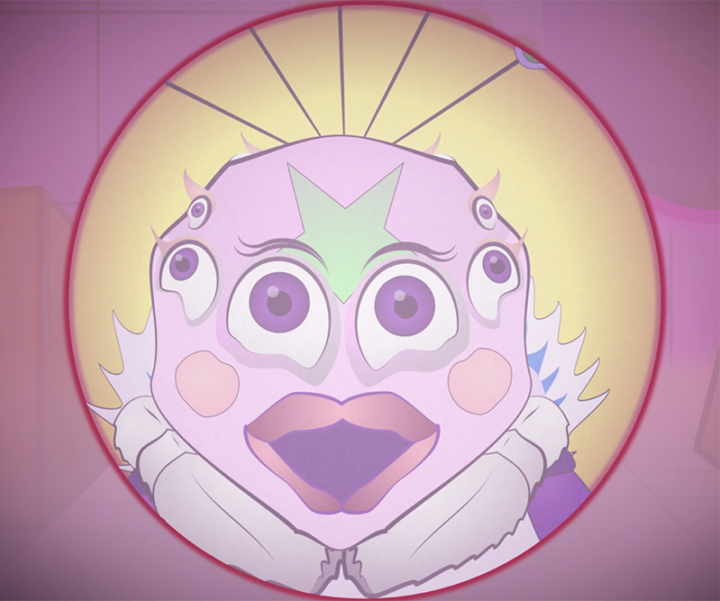Petunia Peacock's POSE! Courtship displays of male peacock spiders
"Tonight we have an extraordinary diversity of queens - ninety male peacock spiders looking to show off and win the coveted trophy for best representing their house"
Published on 28th September 2021


Yas henny, peacock spiders are famous for the courtship dances and peacock-like abdominal ornamentation that males display. This lineage of jumping spiders includes 90 unique species.
The Linnean Society is proud to present a new four-part series of animations, hosted on YouTube, which illustrates the origins and the great diversity of the male Peacock spider's courtship displays. Click here for the transcript.
The drag queen vibe is REAL for this series with our fabulous host, Petunia Peacock. Throughout the series, we learn about the evolution of the male spiders dances and body parts as they attempt to dazzle the female judges with their leg waving, body popping and good vibrations. Cha-cha!
The series provides a fun insight into evolution through sexual selection and is based on research published in the Biological Journal of the Linnean Society in March 2021, with authors Madeline B Girard, Damian O Elias, Guilherme Azevedo, Ke Bi, Michael M Kasumovic, Julianne M Waldock, Erica Bree Rosenblum and Marshal Hedin.
We were lucky enough to grab Damian Elias in for a chat about his research and involvement in the production of this series.
Hi Damian, thanks for giving up some of your free time to talk with us. I'll get straight into it. This series of videos revolves around different species of peacock spider. Can you describe what a peacock spider actually is?
Peacock spiders are diverse group of jumping spiders from the genus Maratus. Maratus are a group specific to Australia and many of the males (but not all) have evolved colourful "fans" that they show to females during mating interactions. These fans bear a resemblance to peacock tails and the courtship behaviour of peacocks, hence the name!
There are around 50 thousand spider species in total. What makes this group of spiders unique?
That's a great question! Jumping spiders as a group are unique because of their eyes and amazing vision that rivals that of much larger animals such as cats and elephants. Many jumping spider species have evolved a dizzying array of colourful ornaments and dance displays as a result and the Australian peacock spiders have really expanded on that. I feel that peacock spiders have some of the most impressive courtship displays known in spiders and, I would argue, across all animals!
The video series really runs with this theme of courtship displays and incorporates the style of a drag queen TV show which is great to watch. What sort of involvement did you have in the formation of this idea?
This idea formed around conversations with the creators of the video series, particularly Ross Ziegelmeier. A lot of educational programming around animals uses human-specific contexts to frame and explain what animals do. Unfortunately, these tend to follow tropes and nearly always focus on the same identities. The drag queen tv show framing was an attempt the expand the contexts used in these types of programming to include queer identities while framing peacock spider evolution in a more fun and interesting way!
Yes, the format is very engaging and I found myself very eager for the next episode which is fantastic as every episode is filled with findings from your research, so its a great form of science communication. Can you give us an insight into the reasons why you investigated this group in the first place? Why is it important to understand them more?
Another great question! I think the real reason is that they are really cool. The secondary reason is that peacock spiders offer a window into studying the evolutionary process and its connection to mate choice, the environment, and how animals sense and process stimuli. The incredible diversity of peacock spiders allows you to approach all sorts of questions from physiological, developmental and genetic processes to ecology and evolution.
Finally, knowing about them is important because of the biodiversity crises facing animals of all kinds across the globe. Usually, only large animals like birds and mammals receive attention from the public (and scientists) and it is becoming increasingly important to understand these overlooked animals like spiders and insects to ensure we do our best in protecting their biodiversity.
Thanks Damian! Petunia Peacock's POSE joins our growing collection of animated journal papers which you can find listed here, or via our YouTube channel.
Blog written by Joe Burton, Education & Public Engagement Manager
Video produced by Ross Ziegelmeier, Multimedia Content Producer

